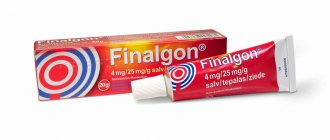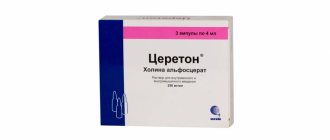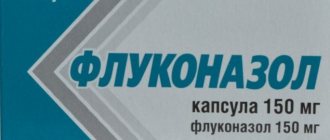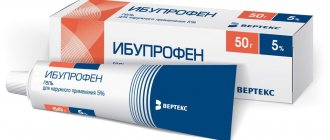Lidocaine is an effective pain reliever. Local anesthetics inhibit the ionic currents involved in the formation of the irritant, due to which the analgesic effect is achieved. Lidocaine stabilizes neuronal membranes, suppresses nerve conduction, and reduces the degree of depolarization.
When is lidocaine indicated?
The range of indications for Lidocaine solution includes the following conditions:
- Local anesthesia required for manipulations in ophthalmology, ENT practice, dentistry, and surgery.
- The use of cephalosporin group of antibacterial drugs as a solvent, the administration of which is characterized by a pronounced pain effect.
Lidocaine for injection allows you to anesthetize the desired area of skin or mucous membrane for several hours, which will be enough for medical manipulation accompanied by increased sensitivity.
Expiration date after opening the package
After opening, the medicine's shelf life changes, as the active and auxiliary chemical compounds react with oxygen in the air.
Dependence of shelf life on dosage form:
- Ampoules with a solution for intravenous and intramuscular injections, as well as a bottle with a suspension after opening, cannot be reused, as sterility is compromised. Remains must be disposed of immediately.
- Eye and ear drops retain their properties and are safe for use for 30 days after opening.
- Gel, cream, ointment and spray can be used for 1 year after opening.
- The patch and one suppository are intended for single use.
- Tablets in blisters are stored for the entire period indicated on the package.
The indicated periods for use are only permissible under conditions of proper storage.
How is lidocaine solution used?
The local anesthetic solution is pre-tested on a separate area of the skin, which makes it possible to assess the presence or absence of an individual negative reaction to the drug.
The dosage of lidocaine solution depends on the type of anesthesia:
- Terminal type of anesthesia involves local application of a solution (2 mg per kg of body weight), maximum 20 ml for an adult patient. The effect lasts no more than 30 minutes.
- Conduction type of anesthesia. The dosage depends on the size of the area that needs to be anesthetized. Maximum dose 20 ml.
- In ophthalmology, the solution is instilled into the conjunctival sac.
- Epidural anesthesia – 22-30 ml of solution.
- Pain relief in obstetrics and gynecology – 20-30 ml of solution.
- In childhood, the dosage is determined individually (on average 3.5-4 mg per kg of weight).
To prevent the development of side effects, the solution must be administered strictly in recommended dosages. The medication Lidocaine, the instructions for use of which contains all the necessary dosages, must be prescribed after a detailed study of the anamnesis.
Storage in medical institutions and pharmacies
| Medical institution | Storage organization |
| Pharmacy warehouse | Ventilated shelves. The air temperature is not higher than 25°C. |
| Pharmacy | Closed pull-out shelves or cabinet; The air temperature is not higher than 25°C. |
| Hospital, dentistry | Closed container in the closet; The air temperature is not higher than 25°C. |
Note: If the air temperature exceeds 25°C, then it is allowed to place the local anesthetic in a refrigerator with a temperature reading of 12°C .
Adverse reactions
If used incorrectly, adverse reactions may occur:
- Dizziness, drowsiness, convulsions, sensory disturbances.
- Tinnitus.
- Changes in blood pressure, cardiac dysfunction.
- Nausea, vomiting.
- Feeling of heat, swelling at the injection site.
- Burning sensation, thrombophlebitis.
The list of adverse reactions is much wider, so it is necessary to monitor the patient’s condition after administration of the lidocaine solution.
Publications in the media
(Lidocainum) INN
Synonyms. Xycaine, Xylocaine.
Composition and release form. 1% solution of lidocaine hydrochloride in ampoules of 10 ml; 2% solution in ampoules of 2 and 10 ml; 10% solution in ampoules of 2 ml; an aerosol can containing 790 doses of lidocaine hydrochloride, 4.8 mg each.
Indications. Infiltration, conduction, epidural, spinal anesthesia; local anesthesia in dentistry, otorhinolaryngology, surgery (tracheal intubation, bronchoesophagoscopy, removal of polyps, etc.); arrhythmia, prevention of ventricular fibrillation.
Pharmachologic effect. Lidocaine has a strong local anesthetic effect and antiarrhythmic activity. Lidocaine is used in different concentrations: for infiltration anesthesia - 0.025-0.5% solution; conductor - 1-2% solution, terminal - 10% solution. Compared to novocaine, it acts faster, stronger and longer. In low concentrations (0.5%) it does not differ significantly in toxicity from novocaine; with increasing concentration to 1-2%, toxicity increases by 40-50%. The drug blocks the occurrence and conduction of nerve impulses, reducing the permeability of neuronal membranes to sodium ions, which leads to stabilization of the membrane and inhibits depolarization. The antiarrhythmic effect of the drug is due to its stabilizing effect on the cell membranes of the myocardium. It blocks the slow flow of sodium ions into myocardial cells and is therefore capable of suppressing the automaticity of ectopic foci of impulse formation. In this case, the conductivity function is not inhibited. The drug promotes the release of potassium ions from myocardial cells and accelerates the process of repolarization of cell membranes, shortens the duration of the action potential and the effective refractory period.
Pharmacokinetics. The rate of absorption is affected by the site of administration and the rate of administration of the drug. With resorptive action from the surface of the mucous membranes, the maximum concentration of lidocaine in the blood is achieved after 10-30 minutes; with intravenous administration of the drug - after 5 minutes. 50% protein bound. Metabolized in the liver to form two pharmacologically active metabolites. T 1/2 is from 1 to 3 hours. A small part of the drug undergoes enterohepatic circulation and is excreted in the feces; 10% is excreted unchanged in urine.
Side effects. Headache, dizziness, drowsiness, anxiety, euphoria, ringing in the ears; bradycardia, conduction disturbances; decrease in blood pressure; collapse.
Contraindications. Increased individual sensitivity to lidocaine, weakness of the sinus node in elderly patients, AV block of II-III degree, severe bradycardia, cardiogenic shock; severe liver dysfunction.
Adverse reactions when interacting with other drugs. When beta-blockers are used together with lidocaine, the metabolism of lidocaine slows down due to a decrease in blood flow to the liver, which leads to an increased risk of lidocaine toxicity. Antagonism was noted in the effects of antimyasthenic drugs and lidocaine due to inhibition of neuronal transmission under the influence of the latter.
Information for the patient. When using an aerosol form of lidocaine, it should be remembered that the amount of the sprayed drug depends on the surface to be anesthetized. In adults, the dose should not exceed 200 mg. The aerosol should not come into contact with the eyes. Various types of local anesthesia are administered by medical staff.
Contraindications to the use of lidocaine solution
The use of the drug is prohibited in patients with individual intolerance to the active substance. Lidocaine injections are also prohibited for use in the following conditions:
- The first few months after myocardial infarction.
- Severe cardiac pathologies with bradycardia.
- Infectious process at the injection site.
- Period of pregnancy, lactation.
- Children's age (up to 15 years).
- Convulsions due to epilepsy.
In these conditions, the use of lidocaine solution is not recommended.
Release forms
For medical use, lidocaine comes in a wide range.
| Dosage form | Active substance | Lidocaine hydrochloride concentration |
| 1% solution for injection | Lidocaine hydrochloride | 10 mg per 1 ml. |
| 2% solution for injection | 20 mg per 1 ml. | |
| 10% solution for injection | 100 mg per 1 ml. | |
| Eye drops 2% | 20 mg per 1 ml. | |
| Eye drops 4% | 40 mg per 1 ml. | |
| Topical spray 10% | 4.6 mg per 1 dose | |
| Topical gel 5% | 50 mg per 1 g. | |
| Ointment for topical use 5% | 50 mg per 1 g. | |
| Cream for external use | 2.5 g per 100 g. | |
| Plaster for external use (Versatis, Emla). | 700 mg per 1 patch | |
| Ear drops (Anauran, Candibiotic, Lorotox, Otipax). | Combined composition | 4 g per 100 ml; |
| Rectal and vaginal suppositories (Gepazolone, Neo-Penotran Forte L, Proctosan, Relief Pro). | Combined composition | From 20 mg to 100 mg per 1 piece. |
| Lozenges (Gexoral tabs extra, Septalor, Sirepsils Express). | Combined composition | 5–10 mg per 1 tablet. |
| Suspension for injection (Hydrocortisone-Richter, Hydrocortisone + Lidocaine Binergia). | Combined composition | 5 mg per 1 ml. |
Interaction of the solution with other drugs
Lidocaine is not recommended to be combined with the following groups of drugs at the same time:
- Analgesics of the narcotic group - threatens respiratory depression.
- Anticoagulants – increases the risk of bleeding.
- Cardiac glycosides – their effectiveness decreases.
- Novocaine group – increases muscle relaxation.
- The standard is a negative effect on respiratory function.
Lidocaine solution should be combined with extreme caution in diseases of the heart and nervous system, accompanied by systematic use of drugs.
Lidocaine, 20 mg/ml, solution for injection, 2 ml, 10 pcs.
When used simultaneously with barbiturates (including phenobarbital), it is possible to increase the metabolism of lidocaine in the liver, reduce the concentration in the blood plasma and, as a result, reduce its therapeutic effectiveness.
When used simultaneously with beta-blockers (including propranolol, nadolol), the effects of lidocaine (including toxic ones) may be enhanced, apparently due to a slowdown in its metabolism in the liver.
When used simultaneously with MAO inhibitors, the local anesthetic effect of lidocaine may be enhanced.
When used simultaneously with drugs that block neuromuscular transmission (including suxamethonium chloride), the effect of drugs that block neuromuscular transmission may be enhanced.
When used simultaneously with hypnotics and sedatives, the inhibitory effect on the central nervous system may be enhanced; with ajmaline, quinidine - possible increased cardiodepressive effect; with amiodarone - cases of seizures and SSSS have been described.
When used simultaneously with hexenal, sodium thiopental (iv), respiratory depression is possible.
When used simultaneously with mexiletine, the toxicity of lidocaine increases; with midazolam - a moderate decrease in the concentration of lidocaine in the blood plasma; with morphine - enhances the analgesic effect of morphine.
When used simultaneously with prenylamine, there is a risk of developing ventricular arrhythmias.
Cases of agitation and hallucinations have been described when used simultaneously with procainamide.
When used simultaneously with propafenone, the duration and severity of side effects from the central nervous system may increase.
It is believed that under the influence of rifampicin, a decrease in the concentration of lidocaine in the blood plasma is possible.
With simultaneous intravenous infusion of lidocaine and phenytoin, side effects of central origin may increase; a case of sinoatrial block due to the additive cardiodepressive effect of lidocaine and phenytoin is described.
In patients receiving phenytoin as an anticonvulsant, a decrease in the concentration of lidocaine in the blood plasma is possible, which is due to the induction of microsomal liver enzymes under the influence of phenytoin.
When used simultaneously with cimetidine, the clearance of lidocaine moderately decreases and its concentration in the blood plasma increases, and there is a risk of increased side effects of lidocaine.
special instructions
Lidocaine injection should only be done under the supervision of a physician. Treatment should be carried out under ECG control.
Before starting treatment, it is recommended to examine the level of potassium in the blood, since if its content is reduced, the effectiveness of the drug decreases.
The drug has an effect on the central nervous system, so it is not recommended to drive or engage in potentially life-threatening activities while using it.
Careful monitoring is required for patients prone to seizures, as even small doses may enhance the convulsive effect.
It is necessary to combine lidocaine with caution with those drugs that increase its bioavailability or slow down its elimination, which can be especially dangerous in case of end-stage renal failure.
With intramuscular administration of lidocaine solution, increased activity of creatine phosphokinase may be observed, which prevents the diagnosis of myocardial infarction.
Rapid administration of lidocaine solution can lead to a sharp decrease in blood pressure, with the possibility of collapse. In this case, the toxic effect of the drug with its cardiotoxic effect should also be considered.
Storage conditions
Medicines containing lidocaine are included in list B. This means that the drug does not have to be in the refrigerator.
The active substance retains all its physicochemical and pharmacological properties for the entire shelf life.
Compliance with conditions for quality storage:
- Temperature range from 10 to 25°C
- Humidity indicator is not higher than 70%
- Avoid exposure to direct sunlight.
Medicines used for anesthesia should absolutely not be frozen, otherwise they will lose most of their properties. They should be placed inside a special first aid kit or in a closed cabinet.







